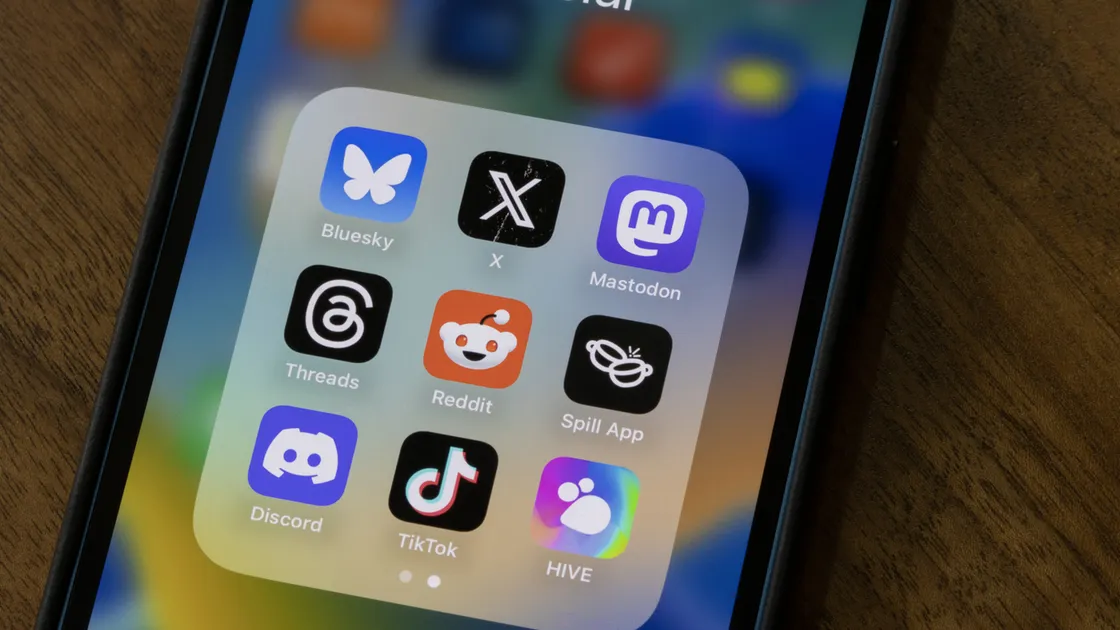Unlocking the Japanese Market Through Social Listening: Turning Real Voices on Social Media into Business Insights

Are you struggling to grasp what your customers truly think? Or finding that your marketing efforts don’t quite resonate in the Japanese market? Traditional research methods often fail to uncover customers’ genuine thoughts and feelings. In Japan, where social media usage is deeply embedded in everyday life, candid customer expressions—real “tweets” and posts—are shared every minute across platforms.
This article introduces social listening, a powerful method that helps extract deep customer insights from vast amounts of SNS data. By tapping into these authentic voices, businesses can craft strategies tailored to Japan’s unique cultural and psychological context.
What is Social Listening?
Social listening is a powerful method for understanding customer sentiment and capturing market trends. It involves analyzing conversations, opinions, and behaviors expressed on social media to gain real-time insights into what people truly think and feel.
In the Japanese market, social listening plays an especially vital role due to the country’s unique cultural nuances—such as indirect communication, a strong emphasis on community, and sensitivity to tone. These elements often make it difficult to capture honest feedback through traditional surveys.
By leveraging social listening, businesses can uncover unfiltered consumer voices and detect subtle shifts in trends, enabling more relevant and emotionally resonant marketing strategies in Japan.
Definition and Core Concept
Social listening is the process of collecting and “listening” to conversational data from social media and the web to gain a deep understanding of customer voices and emerging trends. Unlike simple keyword “monitoring,” social listening takes a proactive approach to uncover the insights behind customer opinions, emotions, and behaviors. It goes beyond surface-level data to interpret what people truly mean and why they act a certain way.
Through social listening, companies can gain access to raw, unfiltered feedback—such as perceptions of their brand, product-related issues, or mentions of competitors—that traditional market research often fails to capture. It serves as a strategic approach to inform smarter business decisions based on real-world conversations.
Difference from Social Media Analytics
Social listening is often confused with social media analytics, but there is a clear distinction between the two. While social media analytics focuses primarily on quantitative data—such as follower counts, engagement rates, and reach on a company’s own social channels—social listening emphasizes a deeper exploration of users’ conversations, emotions, and context across a broader web landscape.
By capturing the qualitative insights behind the numbers, social listening enables businesses to uncover underlying customer sentiments and motivations. This makes it a powerful tool for shaping future strategies based not only on metrics, but on the real voices of consumers.
What to “Listen” to in the Japanese Market
When conducting social listening in the Japanese market, it is crucial to understand both the platforms being used and the characteristics of conversations on each. X (formerly Twitter) is essential for capturing emerging trends and signs of potential backlash due to its immediacy and virality. Instagram focuses on visual content, making it valuable for analyzing brand image and user experiences through UGC (user-generated content). TikTok, widely used among teens and people in their twenties, serves as a key source of youth-driven trends and viral content.
Other platforms like LINE VOOM and YouTube also play important roles, with user comments and reactions offering insight into public sentiment. Additionally, anonymous forums, review sites, and blogs should not be overlooked, as they provide candid opinions and in-depth evaluations that are difficult to capture through mainstream social media alone.
Why Do Japanese Companies Need Social Listening?
Social listening is indispensable for companies formulating marketing strategies and deepening customer relationships. Its value becomes even greater when considering the unique characteristics of the Japanese market.
Gaining Customer Insight and Contributing to Product and Service Improvement
Social listening reveals the honest opinions of customers that traditional surveys often miss. By analyzing natural conversations on social media, companies can gain deep insights such as candid feedback and improvement requests. For example, a food manufacturer discovered comments like “it’s sweeter than expected” and “the packaging is hard to understand” through listening, leading to successful product refinement.
Given that Japanese consumers tend to avoid failure, social listening allows businesses to identify customer concerns and optimize their promotions and information delivery accordingly.
Identifying Early Signs of PR Crises and Protecting the Brand
In today’s social media-driven world, the risk of a PR crisis is a constant concern for companies. In Japan, where cultural norms often emphasize conformity, negative topics can escalate quickly. Social listening serves as a frontline tool for detecting the early signs—or “sparks”—of such crises.
By monitoring small complaints or misunderstandings in real time and responding swiftly and appropriately, companies can prevent potential firestorms before they ignite. This proactive approach is crucial for safeguarding brand trust.
Competitive Analysis and Understanding Market Position
Social listening is highly effective for tracking competitor activities. By including competitor brand names as keywords, businesses can gather candid consumer feedback about the strengths, weaknesses, emotions, frustrations, and expectations associated with rival companies.
For example, a beauty salon identified customer dissatisfaction with the difficulty of booking appointments at competing salons. In response, they successfully differentiated themselves by promoting their own “24/7 online booking” feature as a strength.
This approach allows companies to clearly understand their position in the market, refine their strategies, and uncover new business opportunities.
Discovering New Business Opportunities and Emerging Trends
Social listening is a goldmine for uncovering future business opportunities. On social media, users constantly generate emerging trends, propose new ways of using products, and express latent needs that have yet to be addressed by the market.
For example, by detecting the early signs of a potential “buzz,” companies can quickly adapt and position themselves at the forefront of a trend. This is especially important in Japan, where consumers place a high value on “empathy” and “brand worldview.” Understanding these deeper emotional drivers through listening provides critical insights for product development and campaign planning.
Concrete Steps for Effective Social Listening
To practice social listening effectively, it is essential to have a clear purpose and follow a structured process. Below is a step-by-step guide to implementing social listening in a strategic and impactful way.
Clarifying Objectives and Setting KPIs
The most crucial step in social listening is clearly defining its objective. Without a specific purpose, it becomes difficult to extract meaningful insights. For example, goals such as “improving a new product” or “detecting early signs of a potential PR crisis” should be explicitly set from the beginning.
Along with the objective, it is essential to establish KPIs (Key Performance Indicators) that measure the success of the initiative. These might include the number of actionable insights obtained, sentiment trends, time taken to detect risk signals, or engagement levels on improved content.
This careful and deliberate first step ensures that social listening is directly connected to tangible business outcomes.
Effective Keyword Selection
Setting the right keywords is essential for effective social listening. Keywords function like a “net” that captures relevant conversations across social media, and the quality and quantity of information gathered can vary significantly depending on how they are chosen.
Start by including your brand name, product names, competitor names, industry-specific terms, and campaign-related hashtags. It’s also important to incorporate common nicknames, abbreviations, misspellings, and even emojis—these elements reflect the natural, unstructured way users communicate on social platforms.
Since language trends and online behaviors change over time, regularly reviewing and updating your keyword list ensures that you continue to capture authentic, relevant voices from your audience.
Selecting the Right Tools
Choosing the appropriate tools is crucial when implementing social listening, and should be based on your goals, budget, and required functionalities. Free tools—such as built-in social media search functions or Google Alerts—can be useful for basic monitoring, but they have clear limitations in terms of data scope and analytical depth.
Paid tools like Brandwatch, Meltwater, Sprinklr, Hootsuite, and Social Insight offer more advanced features, including real-time data collection, sentiment analysis, trend tracking, and customizable dashboards. These platforms are especially valuable for businesses seeking detailed insights and strategic applications.
To make the best choice, consider your company’s size, listening objectives, preferred social platforms, and the level of customer support needed. A well-matched tool will not only streamline data collection but also enhance your ability to act on the insights uncovered.
Designing Analytical Frameworks to Interpret Data
Once data has been collected, interpreting the vast amount of information requires a clearly defined analytical framework. A primary focus is sentiment analysis, which helps determine whether online mentions are positive, negative, or neutral. However, in the context of the Japanese language, where indirect expressions and subtle emotional tones are common, human verification plays a vital role in ensuring accuracy.
Beyond sentiment, analysis should consider various dimensions such as the frequency of key terms, the volume of mentions over time, the attributes of users posting the content, and the level of engagement those posts receive. These elements together allow businesses to uncover not just what is being said, but also who is saying it, how often, and with what impact. By examining these factors in combination, it becomes possible to understand the deeper emotions and underlying needs driving customer behavior—offering valuable insights for strategy development in the Japanese market.
Extracting Insights and Turning Them into Action
The ultimate goal of social listening is not merely data collection or analysis, but the transformation of that data into concrete business actions. Once the information has been thoroughly analyzed, the next crucial step is to extract genuine customer insights—those core motivations, unmet needs, or behavioral patterns that are not always explicitly stated but can be inferred from the context and sentiment of social media conversations.
These extracted insights can then inform strategic decisions across multiple departments. In product development, they may reveal pain points or desired features directly voiced by users. In marketing, they help tailor messages that resonate more authentically with target audiences. In public relations, they highlight perceptions that require reputation management or proactive communication.
The true value of social listening lies in how efficiently and accurately an organization can complete the cycle from raw data to insight, and from insight to action. A well-structured listening system does not just observe social media—it activates business intelligence, enabling more responsive, relevant, and effective decision-making across the enterprise.
Examples of Social Listening in Action
Social listening is a valuable tool for addressing a wide range of business challenges. Through concrete case studies, we introduce how Japanese companies are putting social listening into practice and achieving meaningful results.
Example of Product Improvement Through Social Listening
A food manufacturer successfully improved one of its new products by leveraging insights from social listening. The company identified candid customer feedback such as “It’s sweeter than expected” and “The packaging is hard to understand.” These are nuances often missed in traditional surveys. By capturing this gap in actual user experience, the company was able to refine the product to better meet customer needs, ultimately leading to increased sales.
Example of Social Media Campaign Response Analysis
During a specific social media campaign, the company conducted real-time monitoring of hashtag usage, keyword frequency, and sentiment trends. This allowed for a detailed analysis of which messages resonated most, which influencers generated strong engagement, and what unexpected reactions emerged. By also examining correlations with sales figures, the insights were used to inform the planning of future campaigns, contributing to the development of a more effective social media marketing strategy.
Example of Rebuilding Company Strategy Through Competitor Analysis
A home appliance manufacturer discovered negative opinions about competing products through social listening, such as “too complicated to use” and “poor after-sales service.” At the same time, they reaffirmed positive feedback about their own products being “simple and user-friendly.” By emphasizing this as a key differentiator, the company effectively appealed to the Japanese consumer mindset, which tends to prioritize avoiding failure. This strategic shift contributed to an increase in market share.
Example of Preventing a Social Media Backlash
A restaurant chain detected a sudden spike in related keywords and negative sentiment in real-time through social listening after an inappropriate act by a part-time employee was posted on social media. By responding at the early stage of the incident with a prompt apology and clear communication of countermeasures, the company successfully defused the situation. This proactive response served as a strong safety net to protect the brand from the accelerated backlash risk often fueled by Japan’s strong culture of social conformity.
Challenges and Considerations in Implementing Social Listening
Social listening is a powerful tool, but there are challenges and points of caution when it comes to its implementation and operation. Understanding these will help ensure more effective listening activities.
The Overwhelming Volume of Data and the Difficulty of Interpretation
Extracting meaningful insights from the vast amount of social media data is challenging. While the accuracy of sentiment analysis tools is improving, it is still difficult to correctly interpret Japanese-specific expressions such as metaphors, irony, and context-dependent language. Tool-generated data should be viewed as “suggestions,” and human insight—combined with knowledge and cultural understanding—is essential for final interpretation.
Avoiding Ambiguous Research Objectives and the Risk of Over-Reliance on Numbers
It is a mistake to assume that simply implementing a tool will automatically yield valuable insights. Without a clear objective, it becomes unclear what to focus on within the vast amount of data, leading to ineffective results. While listening tools present numerical data in an easy-to-understand format, failing to prioritize “quality” and “context”—such as high-impact comments that may be few in number—can result in misguided decision-making.
Balancing Voices Outside of Social Media
While social listening is a powerful tool, SNS data does not represent the entirety of customer sentiment. It is important to consider groups that do not use social media, as well as personal opinions that are less likely to be expressed online. For example, insights from older demographics—who have lower SNS usage rates—are difficult to capture through listening alone. Therefore, insights gained from social listening should be combined with other methods such as surveys and interviews to develop a more well-rounded understanding of customers.
Social Listening Builds “Preferred Brands” in the Japanese Market
In modern marketing, social listening is an essential tool—one that communicates trust without relying solely on words. In Japan, where cultural traits such as group conformity and risk aversion are strong, the value of social listening is further amplified. Influencers have evolved into key drivers of purchasing decisions through their ability to evoke empathy and embody unique worldviews.
However, succeeding with influencer marketing in Japan requires more than just follower count. A specialized strategy—ranging from influencer selection to content planning—is critical.
If your company seeks to build brand trust through the power of influencers, maximize the impact of social listening, and drive results on social media, we encourage you to consult with hotice. Backed by deep knowledge and a strong network in Japanese influencer marketing, we are ready to support your success.






